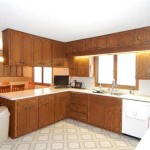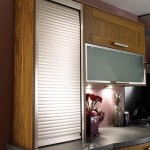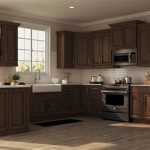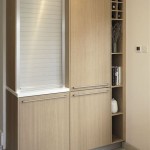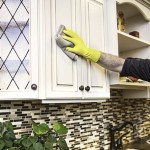Should I Sand or Strip Kitchen Cabinets?
Refacing kitchen cabinets is a popular way to update a kitchen's appearance without the expense of a full remodel. A key decision in this process is whether to sand or strip the existing finish. Both methods have their advantages and disadvantages, and the best choice depends on several factors, including the type of existing finish, the desired new finish, and the DIYer's skill level.
Assessing the Existing Finish
The first step in deciding between sanding and stripping is to determine the type and condition of the existing finish. If the cabinets have a relatively smooth, intact finish, such as a factory-applied lacquer or varnish, sanding is often a viable option. However, if the finish is heavily layered, cracked, or peeling, stripping may be necessary to achieve a smooth, even surface for the new finish.
Additionally, the presence of lead paint requires special consideration. If the cabinets were painted before 1978, there's a possibility of lead paint, and testing is crucial. Disturbing lead paint through sanding or stripping can create hazardous dust. In such cases, professional lead paint abatement is recommended.
Sanding: A Less Intensive Approach
Sanding involves using abrasive materials to remove the existing finish or to create a rough surface that will accept a new finish. It is generally less labor-intensive than stripping, but it may not be suitable for all situations. Sanding is most effective on thinner finishes that are in good condition. It is also a good choice when the goal is to simply roughen the surface for better adhesion of a new coat of paint or stain.
Different grits of sandpaper are used for various stages of sanding. Coarser grits are used for initial removal of the finish, while finer grits smooth the surface and prepare it for the new finish. Proper ventilation and dust collection are essential when sanding to minimize airborne particles and ensure a clean working environment.
Stripping: A More Thorough Removal
Stripping involves using chemical solvents to dissolve the existing finish. It is more effective than sanding at removing thick, multiple layers of paint or varnish, especially those that are cracked or peeling. Stripping allows for a more thorough removal of the finish, down to the bare wood, which can be beneficial for achieving a truly smooth and even finish.
However, stripping is a more time-consuming and labor-intensive process than sanding. It also requires careful handling of chemical strippers, which can be harsh and require proper ventilation and safety precautions. After stripping, the cabinets may require neutralizing and cleaning to remove any remaining stripper residue before applying a new finish.
Considering the Desired New Finish
The desired new finish also plays a role in deciding between sanding and stripping. If the goal is to apply a clear coat or stain, stripping is often preferred as it allows the natural wood grain to show through. Sanding, on the other hand, may be sufficient if the plan is to paint the cabinets, particularly if the existing finish is in good condition.
For intricate details or carvings on cabinet doors, stripping may be more effective in removing the finish from all crevices and ensuring a uniform appearance for the new finish. Sanding can be challenging in these intricate areas and may not achieve as thorough a removal of the existing finish.
Time Commitment and Skill Level
Sanding is generally faster and requires less skill than stripping. It’s a good option for DIYers with limited experience. Stripping, however, is a more complex and time-consuming process that requires careful attention to detail and proper safety precautions. DIYers should realistically assess their skill level and available time before deciding on a method.
Environmental Considerations
Both sanding and stripping generate waste. Sanding produces dust that needs to be contained and properly disposed of. Stripping generates chemical waste that requires specific disposal methods according to local regulations. Environmentally conscious DIYers should research and follow proper disposal guidelines for both methods.
Ultimately, the decision of whether to sand or strip kitchen cabinets depends on a careful evaluation of the existing finish, the desired new finish, available time, skill level, and environmental considerations. Understanding the advantages and disadvantages of each method allows homeowners and DIYers to make an informed decision that best suits their specific project requirements.

How To Refinish Wood Cabinets The Easy Way Love Remodeled
Refinishing Kitchen Cabinets A Beautiful Mess

How To Refinish Wood Cabinets The Easy Way Love Remodeled

How To Strip And Re Stain Kitchen Cabinets Clinton Township Mi Eason Painting

Refinishing Kitchen Cabinets Modern Refacing Made Easy Wisewood

Should I Paint Or Refinish My Kitchen Cabinets

Refinish Kitchen Cabinets With Kilz Restoration Primer

How To Paint Kitchen Cabinets Without Sanding Or Priming

How To Paint Kitchen Cabinets Without Sanding The Budget Decorator

How To Strip Paint Off Kitchen Cabinets And Furniture
Related Posts


